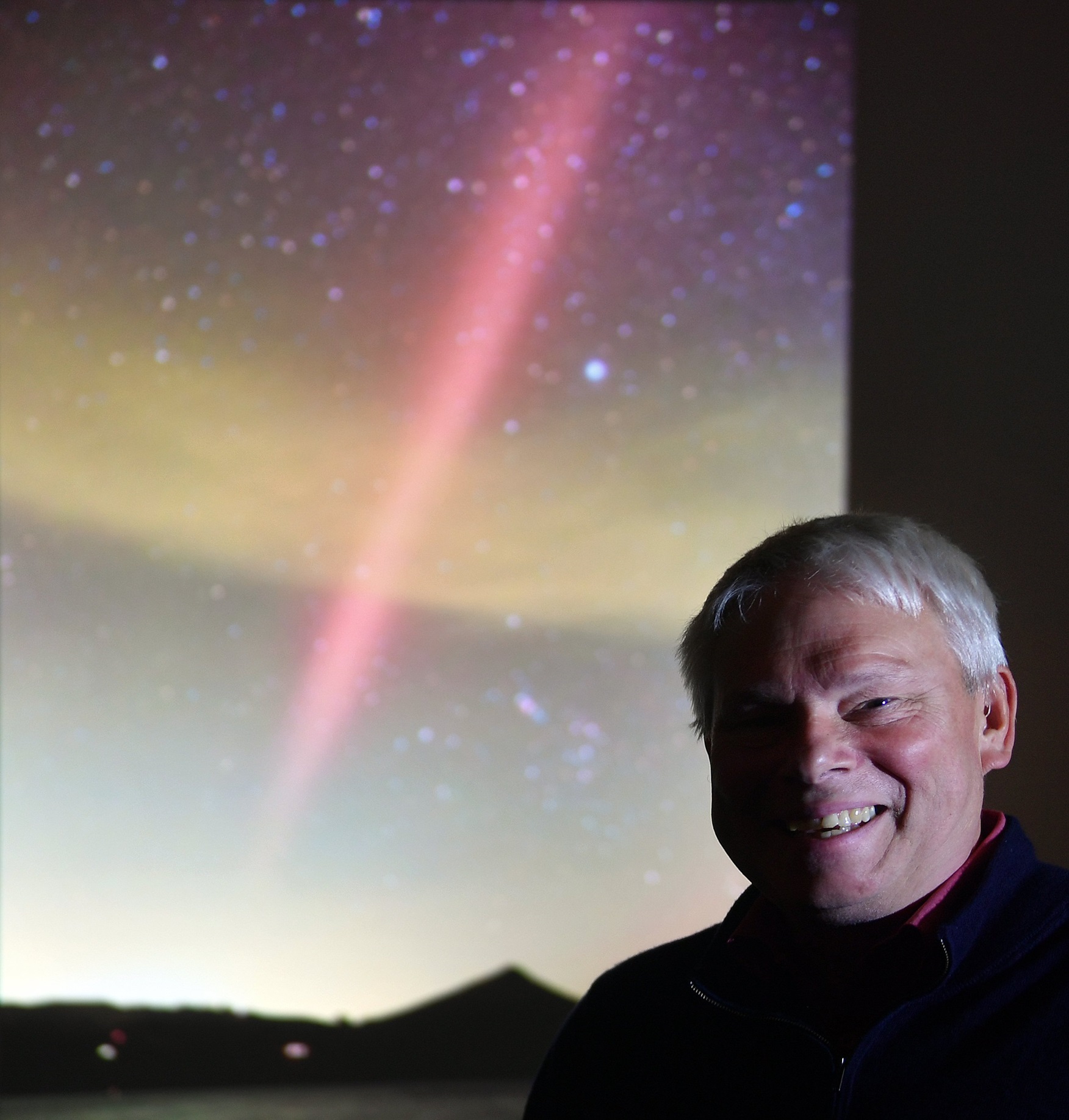But for southern-based astronomers Dr Ian Griffin and Stephen Voss, the invitation from the Massachusetts Institute of Technology to speak at a three-day workshop about Strong Thermal Emission Velocity Enhancement (Steve) was too good an opportunity to turn down.
Dr Griffin said Steve was a phenomenon associated with aurora, and appeared as a purple and green light ribbon in the night sky.
Analysis of satellite data from the European Space Agency's Swarm mission found the phenomenon was caused by a 25km-wide ribbon of hot plasma at an altitude of 450km, with a temperature of 3000°C, which flowed at a speed of 6km per second.
The Steve phenomenon has been observed by auroral photographers for decades, and there are records of it in the night sky as early as 1705.
However, to date, it has not been studied in great depth, he said.
"Back in 2015, I made a fairly scientifically interesting observation of this unusual aurora-related phenomenon from a location near Brighton, which was subsequently published in a scientific journal, and Stephen Voss has been observing this phenomenon over several years.
"The meeting in Fairbanks brings observers like us together with the best science experts in the world to discuss how to study this weird thing that appears during the strongest auroras."
Dr Griffin said it was "quite an honour" to participate in the workshop, because they were the only observers from the southern hemisphere to be invited.

The Haystack mission is to develop technology for radio science applications, which allows scientists to study the structure of our galaxy and the larger universe, to advance scientific knowledge of our planet and its space environment and to contribute to the education of future scientists and engineers.
Dr Erickson said the three-day event would focus on two main objectives related to scientific study of the "not yet explained airglow features in the sub-auroral ionosphere".
They would develop co-ordinated observation strategies, experimental campaigns and associated modes for Steve remote sensing observations to address both synoptic and event-based data gaps.
They would also organise modelling initiatives, informed by present phenomenological understanding, to address key and evolving community questions about the physical morphology and dynamics of Steve.
"The workshop will include valuable hands-on training, experience sharing and collaborative discussions with technical staff from around the world.
"This meeting offers a rare and important opportunity for both skill development and international collaboration."
The workshop will be held at the University of Alaska (Fairbanks) on October 16-18.












